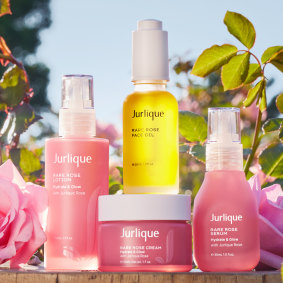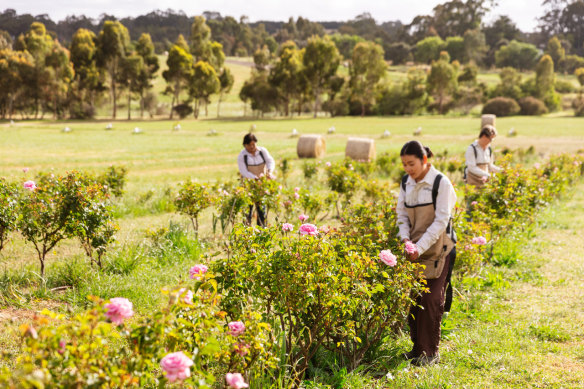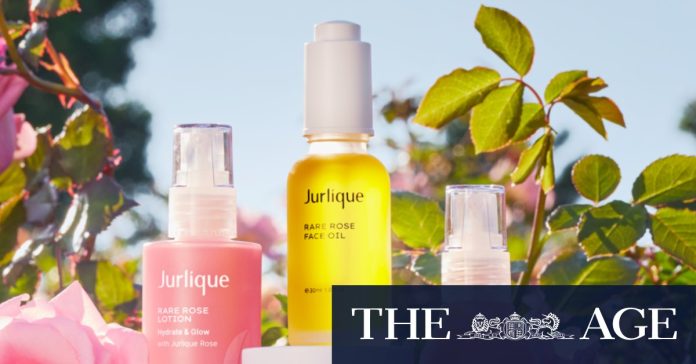[ad_1]
“That resonates with more and more people, obviously, Western markets, Australia, Europe, US. But also, we see that the dial is moving now in Asia, towards natural beauty, holistic beauty.”
The other trend Rethore is observing is that consumers won’t buy natural products that compromise on efficacy. “I’m happy to say that Jurlique is both.”
“The strategy is really to continue what we are doing because we are well positioned to catch these trends because they are coming our way.”
Steady does it
The company’s strategy over the past decade has been to win over customers in Asia, which it has done and continues to do so: the brand’s popularity is growing among Chinese consumers, a demographic that is under economic pressure, and in a skincare market that is moving backwards.
Jurlique has already cultivated and won a loyal following among women aged 40 and older, but the brand is now increasing its focus on capturing Millennial customers who have some disposable income and are likely willing to spend more on higher-quality premium skincare.

Jurlique’s Rare Rose range is made from roses grown exclusively on their farm, the ‘Jurlique rose’.
But this demographic is eager to try new things and takes up product suggestions from social media trends, making them less brand loyal than previous generations.
Jurlique’s products, made from ingredients cultivated on the farm, also cannot keep up with the rapid cycles of the wider skincare market: for instance, Iris root, an ingredient in their recently relaunched Herbal Recovery line targeted at Millennials, takes two years to grow.
“A lot of people don’t realise that doing what we do is a slow process, that we are in cosmetics, which is very high speed. So we have to reconcile these two,” said Rethore.
“We know that our brand resonates with [Millennials]. We need to be more vocal or obvious to them, to talk about ourselves.”
Like other beauty and skincare businesses, Jurlique has added social media and influencer marketing to its tool belt, but Rethore ducks suggestions that it is seeking to be trendy.
Loading
“Viral goes up and down very quickly. We are more [about] long-term sustainable momentum,” he said.
Despite the sentiment, the brand is still geared towards making products that meet market demand, such as its recently released sunscreen lotion. Jurlique made adjustments to production volumes of Herbal Recovery eye roll-on after enthusiastic responses from early test groups. The same product later found some media traction.
Rethore gives credit to Pola Orbis for being a parent company with a light touch, allowing Jurlique to maintain its culture and strategic direction while supporting innovation. A contrasting example would be the recent downfall of The Body Shop in the UK, the US and Canada, which has been attributed to being passed around by L’Oreal, Brazilian cosmetics giant Natura, and then asset manager Aurelius just months before its UK collapse.
Jurlique is the only Australian brand that the $3.3 billion Tokyo Stock Exchange-listed skincare giant owns.
“They believe in the ‘monozukuri’ in Japanese, which is the artisan mindset of making products. So they are dedicating a lot of resources to research and development production because the quality of their products is really high,” said Rethore.
“Definitely they are behind the development of Jurlique … You have a shareholder that believes in you; they are actually one of these companies that have a soul and a vision and a viewpoint, and that’s interesting.”

The Jurlique rose, which has more petals than a regular rose, is hand-harvested.
Back to basics
Rethore would like to win over customers the old-fashioned way: drawing them to revamped stores and delivering excellent experiences, and making sure employees are well-educated about the product and happy to be there.
“It comes from good, engaged staff. Good service in a store is only possible if you have an engaged team, so it’s actually the reflection of your company,” he said.
Customer experience should leave a lasting impression, just as texture and smell should, the retail executive believes.
“It’s not easy to copy by competitors. You can copy your colour, you can copy something [else], but service you cannot. It’s a signature for me.”
[ad_2]
Source link


